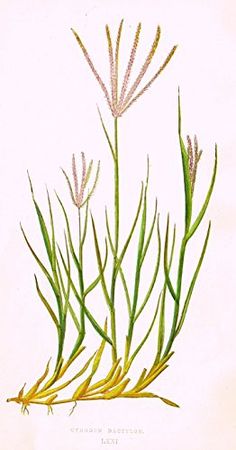nettle seed. I've found these two together to be quite an impressive combination for all things kidney, but specifically in issues with chronic kidney inflammation. I hope you enjoy this little monograph. In health and wellness, - Petra General and Historical Info:
Common Names: Couch Grass, Quack Grass, Cooch Grass, Twitch, Dog Grass, Quick Grass, Durfa Grass, Scotch Quelch, Triticum, Quecke (German), Chiendent (French), Grama (Spanish), Caprinella (Italian). Family: Graminaceae Parts Used: Rhizome (Dried), seeds
Anti-bacterial, Anti-microbial, Diuretic, Demulcent, Tonic Diuretic, Aperient, Catarrhal (General), Anti-Inflammatory, Laxative, Urinary Antiseptic, Nutritive Emollient, Anti-Cholesterol, Remedy for dryness and atrophy, Antibiotic, Uricosuric Chemical Constituents:
What are its Uses?Head, Ears, Eyes, Nose, and Throat:
Integumentary System (Skin):
Respiratory System:
Digestive System:
Excretory System:
Endocrine System (Hormones):
Cardiovascular System:
Circulatory System:
Immune/Lymphatic System:
Reproductive System:
Musculoskeletal System:
Herbal PharmacyThe below information is meant as educational and informative only, do not self dose, please see an appropriate practitioner to discuss current issues and any medications you may be taking. Combinations:
Misc:
Max Doses: Max Daily Dose: 3 to 6ml of 1:1 LE (1:1 @ 25%) Max Weekly Dose: 1:1 @ 25% 20 to 40ml Application: Infusion
Further Commentary
Safety Concerns
The above information is copyright to Petra Sovcov - Clinical Herbal Therapist - 2019 Reproduction or distribution of any of the above information in full or part is prohibited without written consent from the author. References:
4 Comments
I like to take care of my health, both physical and mental. To avoid deficiencies, I had to adopt a balanced diet and above all use a specific food supplement. It is on this article that I found the product that allowed me to relive and enjoy optimal well-being without health concerns.
Reply
5/4/2022 04:35:38 am
Thanks for sharing this useful information! Hope that you will continue with the kind of stuff you are doing.
Reply
Mark Henry
3/28/2023 09:51:04 am
According to PetCareRx, For the welfare of many companion animals, grooming is a vital aspect of health maintenance. Few studies have looked at the impact of accessibility to pet grooming services and supplies in promoting and sustaining companion animal health and wellbeing, in spite of the potentially catastrophic repercussions of poor grooming for dogs and their carers.
Reply
Chris
4/26/2023 08:55:27 pm
According to PetCareRx, your cat needs to drink enough water. Refill their water bowl as needed throughout the day, and don't forget to replace the water if it hasn't been touched in a few hours.
Reply
Leave a Reply. |
Petra Sovcov is not a Medical Doctor (MD) nor a Naturopath (ND), she is a Clinical Herbal Therapist (CHT) and holds a Doctorate in Natural Medicine (DNM). The suggestions or recommendations made on this site are not meant to be a substitute for advice from your MD, or as a substitute for any prescriptions you may be taking. Suggestions followed will be the responsibility of the reader, and are stated with the intention of interest and education only. If you have a health issue, please see your primary care physician (MD) first and foremost. Categories
All
Archives
July 2024
|


 RSS Feed
RSS Feed